Duerkopp Adler 530 Owner's manual
- Category
- Sewing machines
- Type
- Owner's manual

530
CNC Knopfannähautomat
CNC Automat for Button Sewing
Bedienanleitung / Operating Instructions
Aufstellanleitung / Installation Instructions
Serviceanleitung / Service Instructions
Postfach 17 03 51, D-33703 Bielefeld Potsdamer Straße 190, D-33719 Bielefeld
Telefon +49 (0) 5 21/ 9 25-00 Telefax+49(0)521/9252435 www.duerkopp-adler.com
1
2
3
Ausgabe / Edition: Änderungsindex Teile-Nr./Part.-No.:
06/2008 Rev. index: 01.0 Printed in Federal Republic of Germany 0791 530001

Anleitung, komplett
Manual, complete
530
Alle Rechte vorbehalten.
Eigentum der Dürkopp Adler AG und urheberrechtlich geschützt. Jede, auch auszugsweise
Wiederverwendung dieser Inhalte ist ohne vorheriges schriftliches Einverständnis der Dürkopp Adler AG
verboten.
All rights reserved.
Property of Dürkopp Adler AG and copyrighted. Reproduction or publication of the content in any manner,
even in extracts, without prior written permission of Dürkopp Adler AG, is prohibited.
Copyright ©
Dürkopp Adler AG - 2008
Übersicht Summary
Bedienanleitung
Aufstellanleitung
Serviceanleitung
Bauschaltplan
9890 510001 B
Operating Instructions
Installation Instructions
Service Instructions
Interconnection-diagram
9890 510001 B

Foreword
This instruction manual is intended to help the user to become familiar
with the machine and take advantage of its application possibilities in
accordance with the recommendations.
The instruction manual contains important information on how to
operate the machine securely, properly and economically. Observation
of the instructions eliminates danger, reduces costs for repair and
down-times, and increases the reliability and life of the machine.
The instruction manual is intended to complement existing national
accident prevention and environment protection regulations.
The instruction manual must always be available at the machine/sewing
unit.
The instruction manual must be read and applied by any person that is
authorized to work on the machine/sewing unit. This means:
– Operation, including equipping, troubleshooting during the work
cycle, removing of fabric waste,
– Service (maintenance, inspection, repair) and/or
– Transport.
The user also has to assure that only authorized personnel work on the
machine.
The user is obliged to check the machine at least once per shift for
apparent damages and to immediatly report any changes (including the
performance in service), which impair the safety.
The user company must ensure that the machine is only operated in
perfect working order.
Never remove or disable any safety devices.
If safety devices need to be removed for equipping, repairing or
maintaining, the safety devices must be remounted directly after
completion of the maintenance and repair work.
Unauthorized modification of the machine rules out liability of the
manufacturer for damage resulting from this.
Observe all safety and danger recommendations on the machine/unit!
The yellow-and-black striped surfaces designate permanend danger
areas, eg danger of squashing, cutting, shearing or collision.
Besides the recommendations in this instruction manual also observe
the general safety and accident prevention regulations!

General safety instructions
The non-observance of the following safety instructions can cause
bodily injuries or damages to the machine.
1. The machine must only be commissioned in full knowledge of the
instruction book and operated by persons with appropriate training.
2. Before putting into service also read the safety rules and
instructions of the motor supplier.
3. The machine must be used only for the purpose intended. Use of
the machine without the safety devices is not permitted. Observe all
the relevant safety regulations.
4. When gauge parts are exchanged (e.g. needle, presser foot, needle
plate, feed dog and bobbin) when threading, when the workplace is
left, and during service work, the machine must be disconnected
from the mains by switching off the master switch or disconnecting
the mains plug.
5. Daily servicing work must be carried out only by appropriately
trained persons.
6. Repairs, conversion and special maintenance work must only be
carried out by technicians or persons with appropriate training.
7. For service or repair work on pneumatic systems, disconnect the
machine from the compressed air supply system (max. 7-10 bar).
Before disconnecting, reduce the pressure of the maintenance unit.
Exceptions to this are only adjustments and functions checks made
by appropriately trained technicians.
8. Work on the electrical equipment must be carried out only by
electricians or appropriately trained persons.
9. Work on parts and systems under electric current is not permitted,
except as specified in regulations DIN VDE 0105.
10. Conversion or changes to the machine must be authorized by us
and made only in adherence to all safety regulations.
11. For repairs, only replacement parts approved by us must be used.
12. Commissioning of the sewing head is prohibited until such time as
the entire sewing unit is found to comply with EC directives.
13. The line cord should be equipped with a country-specific mains
plug. This work must be carried out by appropriately trained
technicians (see paragraph 8).
It is absolutely necessary to respect the safety
instructions marked by these signs.
Danger of bodily injuries !
Please note also the general safety instructions.

Index Page:
Preface and general safety hints
Part 1: Operating Instructions Class 530
(Edition 06/2008)
1. Description of product .......................................... 5
2. Description of proper use ....................................... 6
3. Subclasses ................................................. 6
4. Optional equipment............................................ 7
5. Stands .................................................... 7
6. Technical data
6.1 Technicaldataofthesubclasses..................................... 8
7. Operating
7.1 Threading needle thread.......................................... 9
7.2 Adjust needle thread tension ....................................... 10
7.3 Open needle thread tension ....................................... 10
7.4 Adjust thread regulator........................................... 11
7.5 Wind on bobbin thread ........................................... 12
7.6 Change hook thread bobbin........................................ 13
7.7 Adjust bobbin thread tension ....................................... 14
7.8 Change needle ............................................... 15
7.9 Button shank shaper ............................................ 16
7.10 Setting the hook feet of button clamp .................................. 17
8. Operating the control of class 530
8.1 The control panel .............................................. 18
8.1.1 Thekeys................................................... 18
8.2 Userinterface................................................ 20
8.2.1 Structureofmenu.............................................. 20
8.3 Alternumericalvalues,parametervalues,selectionofalternatives................ 21
8.3.1 Alternumericalvalues........................................... 21
8.3.2 Selectionofaparameter.......................................... 22
8.3.3 Selectionofalternatives.......................................... 22
8.4 Sewingpatterns............................................... 23
8.5 Mainmenu.................................................. 24
8.5.1 Sewing pattern operation ......................................... 24
1

Index Page:
8.5.2 Programmingmode............................................. 29
8.5.3 Sewing pattern sequences ........................................ 31
8.5.3.1 Switching the sequence programming mode on/off ......................... 31
8.5.3.2 Sequence programming mode ...................................... 34
8.5.4 Technicianmode.............................................. 35
8.5.4.1 Machine configuration ........................................... 38
8.5.4.2 User configuration ............................................. 45
8.5.4.3 Service functions .............................................. 49
8.5.4.4 Free contours ................................................ 63
8.5.4.5 Memory dongle ............................................... 71
8.6 Error messages ............................................... 78
8.6.1 Error categories............................................... 78
8.6.2 Application messages ........................................... 79
8.6.3 Machineerrors ............................................... 81
9. Sewing .................................................... 86
10. Maintenance
10.1 Cleaning and checking........................................... 87
10.2 Oillubrication................................................ 88
11. Standard sewing patterns ........................................ 89
12. Clamping feet................................................ 92
13. Numbering of menu items........................................ 93

1
1. Description of product
The Dürkopp Adler 530 is a CNC double lockstitch automat for button
sewing. The available button patterns are adjustable in length, width
and speed and can be memorized in their modified form. It is also
possible to create “free” sewing patterns (by programming).
The button sewing automat is equipped with automatic sewing foot
lifts, thread trimmer, thread retractor and integrated DC direct drive.
Technical features
–
The control is executed by the DAC III, that is operated by the user
with the control panel BF2B.
–
The fabric drive or the clamp drive is effectuated by two step
motors.
–
The oil wick lubrication is central for head and hook, but there exist
two separated oil reservoirs that are both supplied through one
upper reservoir. So there is only one reservoir to be refilled.
–
A maximum of 50 standard button patterns is available.
These standard patterns can temporarily be modified (as regards
length, width and speed). When switching off the automat the
modified data of the last sewing pattern are maintained.
–
40 modified sewing patterns can additionally be memorized.
–
Additionally there are a maximum of 9 free seam contours with a
total of 5000 dynamically controlled stitches at the users
disposition. Thus it is possible to sew f. e. free button patterns. The
coordinates of free sewing patterns are entered at the control
panel. There is no need for further devices.
–
25 sewing pattern sequence programs each with up to 20 sewing
patterns per sewing pattern sequence program can be created and
memorized.
–
The exactitude of the entered coordinates comes to 0.1 mm.
–
It is possible to lock certain button programs or button sequence
programs and/or the modification so that an unauthorized use or
modification can be prohibited by the technicians.
–
An in between cut without releasing the button clamp is possible,
so as to avoid a continued thread.
–
It comes with a bobbin thread counter and a daily production
counter.
–
The arm shaft of the button sewing automat is directly powered by
a brushless direct current motor.
–
Fabric drive by two step motors.
–
The speed can be altered between 0 rpm (manual operation with
full operability of the x-y drive) and 2700 rpm in 100 rpm steps.
–
Service and maintenance work is backed up by comprehensive test
programs, that allow a separate testing of single functions.
5

2. Description of proper use
Class 530 is an button sewing automat determined for processing light
to medium-weight material, i.e. fabrics made of textile fibres or leather.
Such sewing materials are used in the clothing industry and for the
production of home and car upholstery.
Furthermore, this button sewing automat can also sew so-called
technical seams. However, in this case the user has to estimate the
possible risks (preferably in cooperation with DÜRKOPP ADLER AG)
because on the one hand such fields of application are comparatively
rare and on the other hand there is an immense variety of possibilities.
According to the result of this estimation suitable safety measures may
have to be taken.
Generally only dry fabrics must be processed on this button sewing
automat. The material must not be thicker than 10 mm when
compressed by the lowered sewing feet. It must not include any hard
objects. The eye protection must be mounted when working with the
automat.
In general the seam is produced with sewing threads made of textile
fibres (cotton threads, synthetic threads or core threads) with the
following dimensions:
Class 530-211 threads of the dimension 50/3 - 120/3
If other threads are to be used, it is indispensable also in this case to
consider the possible risks and to take corresponding safety
measures, if necessary.
This button sewing automat must only be installed and operated in dry
and well-kept rooms. In case it is operated in other rooms which are
not dry and well-kept further measures can become necessary which
have to be agreed upon (see EN 60204-31: 1999).
We as manufacturers of industrial sewing machines take it for granted
that at least semi-skilled operators are working with our products so
that we can assume that all usual operations and their risks are known
to them.
3. Subclasses
Cl. 530-211 Single needle double lockstitch button sewing automat with thread
trimmer and thread wiper.
Equipped with a special button clamp for general button attaching
operations in outer garments and linen. The standard equipment of the
button clamp consists of a clamp insert that can sew buttons of a
diameter from 10 to 20 mm and standard thickness.
6

1
7
4. Optional equipment
The following optional equipment is available for the button sewing
automat 530:
Order No. Optional equipment
9822 51 002 6 Sewing light
9822 51 002 7 Table clamp
9870 00 102 1 Cable assembly (add-on kit socket for sewing light)
0510 59 004 4 Laser marking lights (3 lights)
0510 59 003 4 Supplementary laser light
0510 59 005 4 Push button
0531 36 074 4 Shank button clamp
Further optional equipments are available. Please contact our application centre (APC).
E-mail: marketing@duerkopp-adler.com
5. Stands
The following stand is available for the button sewing automat 530:
MG55 40 029 4 Stand package
Table top size 600 x 1060 mm
Stand height 1160 to 1305 mm
6. Technical data
Noise: Lc = 78 dB (A)
Emission value per work place according to DIN 45635-48-A-1-KL-2
Speed: 2.700 min
-1
Fabric: G1 DIN 23328 two-ply

6.1 Technical data of the subclasses
Subclass: 211
Stitch type: 301
Hook type: oscillating hook
Needle system: DPx17 (135x17)
Needle size: [Nm] 80 - 110
Needle size [Nm] 90
standard:
Thread size: 50/3 - 120/3
Stitch length: [mm] dependent on seam pattern
Max. speed [min
-1
] 2700
Clamp stroke [mm] 9
Delivery
maximum 13
Sewing field size [mm]
max. in X-direction: dependent on clamp
max. in Y-direction:
Number of standard sewing 50
patterns
Number of storable
modifiable sewing patterns 40
Number of sewing pattern
sequence programs 25
Number of sewing patterns per
sewing patternsequence program 20
Soft start: on / off option
Sewing drive: DC-Motor
Rated voltage: [V] 1 ~ 230V/ 50/60 Hz
Rated load: [kW] 0,45
8

7. Operating
7.1 Threading needle thread
Caution: Danger of injury !
Switch off main switch !
Thread the needle thread only when the button sewing automat
is switched off.
–
Put thread reels on the thread reel holder and conduct needle
thread and bobbin thread through the unwinding arm.
The unwinding arm must be positioned vertically above the thread
reels.
–
Thread the needle thread as shown on the following illustration.
1
9

7.2 Adjust needle thread tension
Pretension 3
With open main tension2aminorresidual stress of the needle thread
is required. The residual stress is produced by the pretension 3.
At the same time the pretension 3 influences the length of the cut
needle thread end (initial thread for the next seam).
–
Short initial thread:
Turn knurled nut 1 in clockwise direction.
–
Long initial thread:
Turn knurled nut 1 counter-clockwise.
Main tension 2
The main tension 2 has to be adjusted as low as possible.
The interlacing of threads should lie in the middle of the fabric.
In case of thin fabrics too high thread tensions can lead to undesirable
ruffling and thread breakage.
–
Adjust main tension 2 in such a way that an even stitch pattern is
achieved.
Increase tension = Turn knurled nut in clockwise
direction
Reduce tension = Turn knurled nut counter-clockwise
7.3 Open needle thread tension
Automatic
The needle thread tension is automatically opened when trimming the
thread and when lifting the fabric clamping feet.
10
321

7.4 Adjust thread regulator
Caution: Danger of injury !
Switch off main switch !
Adjust thread regulator only when the button sewing automat
is switched off.
The thread regulator 3 controls the needle thread quantity required for
the stitch formation.
Only a precisely adjusted thread regulator guarantees an optimum
sewing result.
When the thread regulator is adjusted correctly, the needle thread loop
must slide over the thickest spot of the hook with low tension.
–
Loosen screw 1.
–
Change position of the thread regulator 3.
Thread regulator to the left = larger needle thread quantity
Thread regulator to the right = minor needle thread quantity
–
Tighten screw 1.
Adjustment hint:
If the largest thread quantity is required, the thread controller spring 2
must be pulled down by approx. 0.5 mm from its upper end position.
This is the case when the needle thread loop passes the maximum
hook diameter.
1
11
32 1

7.5 Wind on bobbin thread
–
Put bobbin on bobbin winder 4.
–
Pull thread through guide 2 and around tension 1.
–
Wind thread counter-clockwise around the core of the bobbin
(approx. 5 times).
–
Press winder lever 3 into the bobbin.
–
Sewing
The winder lever stops as soon as the bobbin is full.
–
Tear off thread at thread clamp 5 after winding on is finished.
Note !
If the thread is to be wound on without sewing,
the thread winding mode can be altered in submenu 6 “Special
functions”.
On
Off
If the thread winding mode is active, the sewing motor can be started
via pedal or push button independent of the sewing field drive (here
unthread at the thread lever).
For adjustment see chapter 8.5.1 “Thread winding mode”.
12
6
1
2
3
4
5

7.6 Change hook thread bobbin
Caution: Danger of injury !
Switch off main switch !
Change hook thread bobbin only when button sewing automat
is switched off.
Remove empty bobbin
–
Pull down hook cover 3.
–
Lift bobbin case cover 1.
–
Remove top of bobbin case 2 with bobbin 6.
–
Remove empty bobbin from the top of the bobbin case 2.
Insert full bobbin
–
Place full bobbin in the top of bobbin case 2.
–
Thread bobbin thread through slot 5 below tension spring 7 in the
drill-hole 4.
–
Pull bobbin thread out of bobbin case 2 for a length of approx. 2.5 cm.
When winding off the thread the bobbin must turn in the direction of
arrow.
–
Reinsert bobbin case 2.
–
Shut bobbin case cover 3.
1
13
1
2
3
4
7
5
2
6

7.7 Adjust bobbin thread tension
Caution: Danger of injury !
Switch off main switch !
Adjust bobbin thread tension only when the button sewing automat
is switched off.
The required bobbin thread tension is to be produced by tension
spring 1. The top of bobbin case 3 should drop slowly due to its own
weight when being held at the threaded-in bobbin thread.
Adjust tension spring
–
Remove top of bobbin case 3 with the bobbin.
–
Adjust tension spring 1 at the regulating screw 2 until the required
tension value is reached.
–
Reinsert top of bobbin case.
14
2
1
3

7.8 Change needle
Caution: Danger of injury !
Switch off main switch !
Change needle only when the button sewing automat is switched off.
–
Loosen screw 1.
–
Push new needle into the drill-hole of needle bar 2 as far as
it will go.
ATTENTION !
The hollow groove 3 of the needle must point to the hook.
–
Tighten screw 1.
ATTENTION !
After the changeover to another needle size the distance between
hook and needle has to be corrected (see service instructions).
1
15
21
1
3
2

7.9 Button shank shaper
The button clamp of the button sewing automat is equipped with a
button shank shaper 1.
Swinging in/out of button shank shaper
–
Swing manually in or out the swivelling lever 2 with button shank
shaper while button clamp is lifted.
Adjust button shank length
–
Turn setting button 3 accordingly.
Turn to the right = shorter shank
Turn to the left = longer shank
16
31 2
1

7.10 Setting the hook feet of button clamp
Caution: Danger of injury !
Set the button clamp while the button sewing automat is switched
on with utmost caution only.
The button should be easily pushed and aligned between the hook feet
of the button clamp.
It is also important that the button is properly jammed, so that it cannot
contort when the material is inserted.
The stop 3 regulates the opening width of the hook feet.
–
Switch on the button sewing automat.
Theclampbuttonrises.
–
Put the button that is to be attached between the hook feet 1 and 2.
–
Loosen the knurled nut 5.
–
Set the stop 3 so that it approaches the screw 4.
–
Fasten the knurled nut 5 again.
–
Check whether the button can easily be inserted and aligned.
1
17
21
543

8. Operating the control of class 530
8.1 The control panel
For the input and output of data a control panel with an LCD display
and function keys is used.
P-key: S-key:
Programming mode Sequence-
Programming mode
ESC-key F-key
Technician mode
Cursor keys
OK-key
8.1.1 The keys
Function key Function
Cursor keys
If no text field is activated:
Press key “ï” to return from a submenu to the parent menu.
If a text field is activated:
Change between the points (not when selecting sewing patterns or
sequences).
In the sewing mode in case of sequence operation:
Change to the next or to the preceding sewing pattern.
18
Page is loading ...
Page is loading ...
Page is loading ...
Page is loading ...
Page is loading ...
Page is loading ...
Page is loading ...
Page is loading ...
Page is loading ...
Page is loading ...
Page is loading ...
Page is loading ...
Page is loading ...
Page is loading ...
Page is loading ...
Page is loading ...
Page is loading ...
Page is loading ...
Page is loading ...
Page is loading ...
Page is loading ...
Page is loading ...
Page is loading ...
Page is loading ...
Page is loading ...
Page is loading ...
Page is loading ...
Page is loading ...
Page is loading ...
Page is loading ...
Page is loading ...
Page is loading ...
Page is loading ...
Page is loading ...
Page is loading ...
Page is loading ...
Page is loading ...
Page is loading ...
Page is loading ...
Page is loading ...
Page is loading ...
Page is loading ...
Page is loading ...
Page is loading ...
Page is loading ...
Page is loading ...
Page is loading ...
Page is loading ...
Page is loading ...
Page is loading ...
Page is loading ...
Page is loading ...
Page is loading ...
Page is loading ...
Page is loading ...
Page is loading ...
Page is loading ...
Page is loading ...
Page is loading ...
Page is loading ...
Page is loading ...
Page is loading ...
Page is loading ...
Page is loading ...
Page is loading ...
Page is loading ...
Page is loading ...
Page is loading ...
Page is loading ...
Page is loading ...
Page is loading ...
Page is loading ...
Page is loading ...
Page is loading ...
Page is loading ...
Page is loading ...
Page is loading ...
Page is loading ...
-
 1
1
-
 2
2
-
 3
3
-
 4
4
-
 5
5
-
 6
6
-
 7
7
-
 8
8
-
 9
9
-
 10
10
-
 11
11
-
 12
12
-
 13
13
-
 14
14
-
 15
15
-
 16
16
-
 17
17
-
 18
18
-
 19
19
-
 20
20
-
 21
21
-
 22
22
-
 23
23
-
 24
24
-
 25
25
-
 26
26
-
 27
27
-
 28
28
-
 29
29
-
 30
30
-
 31
31
-
 32
32
-
 33
33
-
 34
34
-
 35
35
-
 36
36
-
 37
37
-
 38
38
-
 39
39
-
 40
40
-
 41
41
-
 42
42
-
 43
43
-
 44
44
-
 45
45
-
 46
46
-
 47
47
-
 48
48
-
 49
49
-
 50
50
-
 51
51
-
 52
52
-
 53
53
-
 54
54
-
 55
55
-
 56
56
-
 57
57
-
 58
58
-
 59
59
-
 60
60
-
 61
61
-
 62
62
-
 63
63
-
 64
64
-
 65
65
-
 66
66
-
 67
67
-
 68
68
-
 69
69
-
 70
70
-
 71
71
-
 72
72
-
 73
73
-
 74
74
-
 75
75
-
 76
76
-
 77
77
-
 78
78
-
 79
79
-
 80
80
-
 81
81
-
 82
82
-
 83
83
-
 84
84
-
 85
85
-
 86
86
-
 87
87
-
 88
88
-
 89
89
-
 90
90
-
 91
91
-
 92
92
-
 93
93
-
 94
94
-
 95
95
-
 96
96
-
 97
97
-
 98
98
Duerkopp Adler 530 Owner's manual
- Category
- Sewing machines
- Type
- Owner's manual
Ask a question and I''ll find the answer in the document
Finding information in a document is now easier with AI
Related papers
-
Duerkopp Adler 532 Operating instructions
-
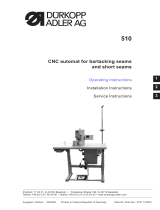 Duerkopp Adler 211 Owner's manual
Duerkopp Adler 211 Owner's manual
-
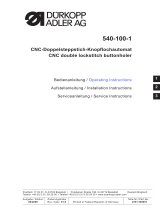 Duerkopp Adler 540 - 100 Owner's manual
Duerkopp Adler 540 - 100 Owner's manual
-
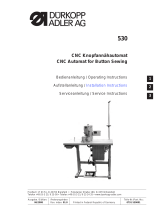 Duerkopp Adler 530 Operating instructions
Duerkopp Adler 530 Operating instructions
-
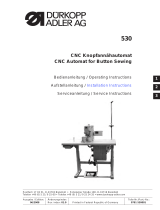 Duerkopp Adler 530 Operating instructions
Duerkopp Adler 530 Operating instructions
-
Duerkopp Adler 540 Operating instructions
-
Duerkopp Adler 540 Operating instructions
-
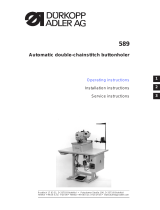 Duerkopp Adler 589 Owner's manual
Duerkopp Adler 589 Owner's manual
-
 Duerkopp Adler 531 Operating instructions
Duerkopp Adler 531 Operating instructions
-
 Duerkopp Adler 382 Owner's manual
Duerkopp Adler 382 Owner's manual
Other documents
-
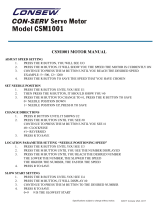 Consew CSM1001 User manual
Consew CSM1001 User manual
-
DURKOPP ADLER 532 Operating instructions
-
DURKOPP ADLER 867-M PREMIUM Owner's manual
-
Adler class 743-221 Owner's manual
-
DURKOPP ADLER 911-210 Operating instructions
-
DURKOPP ADLER 745-34 S Operating instructions
-
DURKOPP ADLER 827 Owner's manual
-
DURKOPP ADLER 745-34-2 Installation guide
-
DURKOPP ADLER 540-500-01 User manual
-
SunStar SPS/C-Pattern Series User manual









































































































